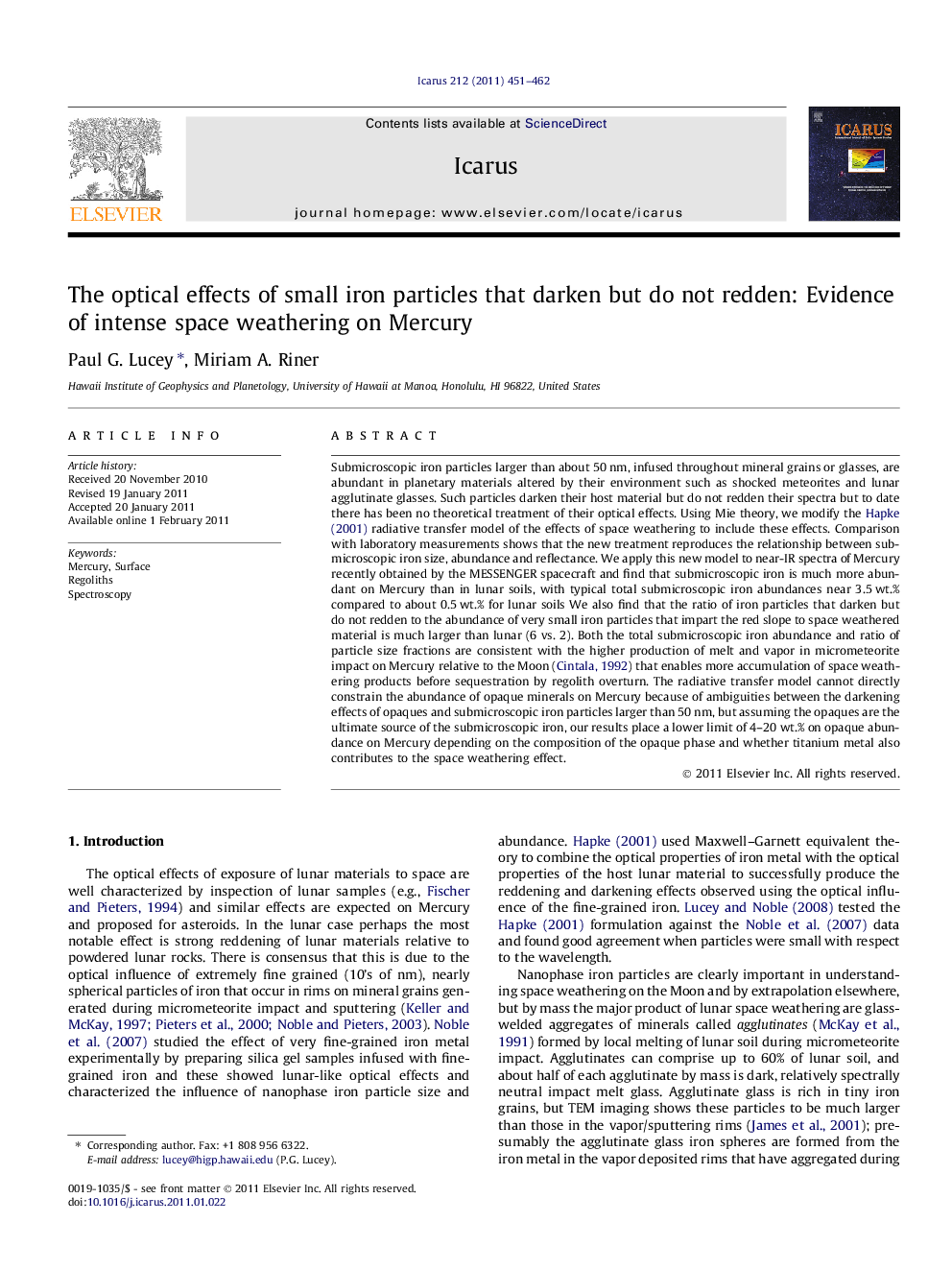| کد مقاله | کد نشریه | سال انتشار | مقاله انگلیسی | نسخه تمام متن |
|---|---|---|---|---|
| 1774573 | 1021169 | 2011 | 12 صفحه PDF | دانلود رایگان |

Submicroscopic iron particles larger than about 50 nm, infused throughout mineral grains or glasses, are abundant in planetary materials altered by their environment such as shocked meteorites and lunar agglutinate glasses. Such particles darken their host material but do not redden their spectra but to date there has been no theoretical treatment of their optical effects. Using Mie theory, we modify the Hapke (2001) radiative transfer model of the effects of space weathering to include these effects. Comparison with laboratory measurements shows that the new treatment reproduces the relationship between submicroscopic iron size, abundance and reflectance. We apply this new model to near-IR spectra of Mercury recently obtained by the MESSENGER spacecraft and find that submicroscopic iron is much more abundant on Mercury than in lunar soils, with typical total submicroscopic iron abundances near 3.5 wt.% compared to about 0.5 wt.% for lunar soils We also find that the ratio of iron particles that darken but do not redden to the abundance of very small iron particles that impart the red slope to space weathered material is much larger than lunar (6 vs. 2). Both the total submicroscopic iron abundance and ratio of particle size fractions are consistent with the higher production of melt and vapor in micrometeorite impact on Mercury relative to the Moon (Cintala, 1992) that enables more accumulation of space weathering products before sequestration by regolith overturn. The radiative transfer model cannot directly constrain the abundance of opaque minerals on Mercury because of ambiguities between the darkening effects of opaques and submicroscopic iron particles larger than 50 nm, but assuming the opaques are the ultimate source of the submicroscopic iron, our results place a lower limit of 4–20 wt.% on opaque abundance on Mercury depending on the composition of the opaque phase and whether titanium metal also contributes to the space weathering effect.
Research highlights
► We model the optical effects of particles over a wide range of submicroscopic sizes.
► The model reproduces laboratory measurements and lunar soil measurements.
► The model shows Mercury has more submicroscopic iron than the Moon.
► Particle sizes of submicroscopic iron are larger on Mercury than the Moon.
Journal: Icarus - Volume 212, Issue 2, April 2011, Pages 451–462